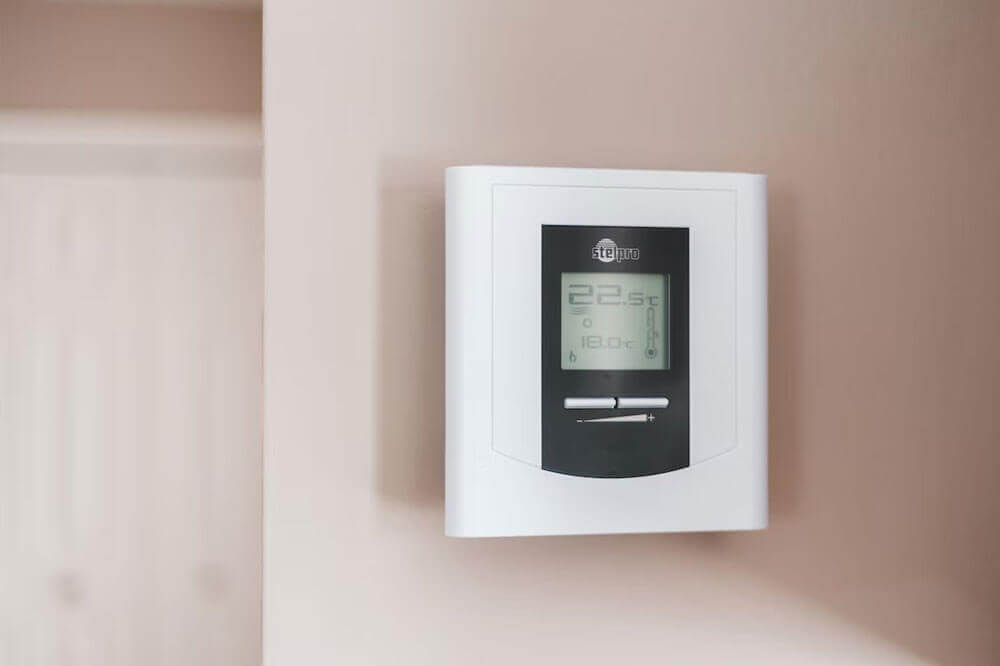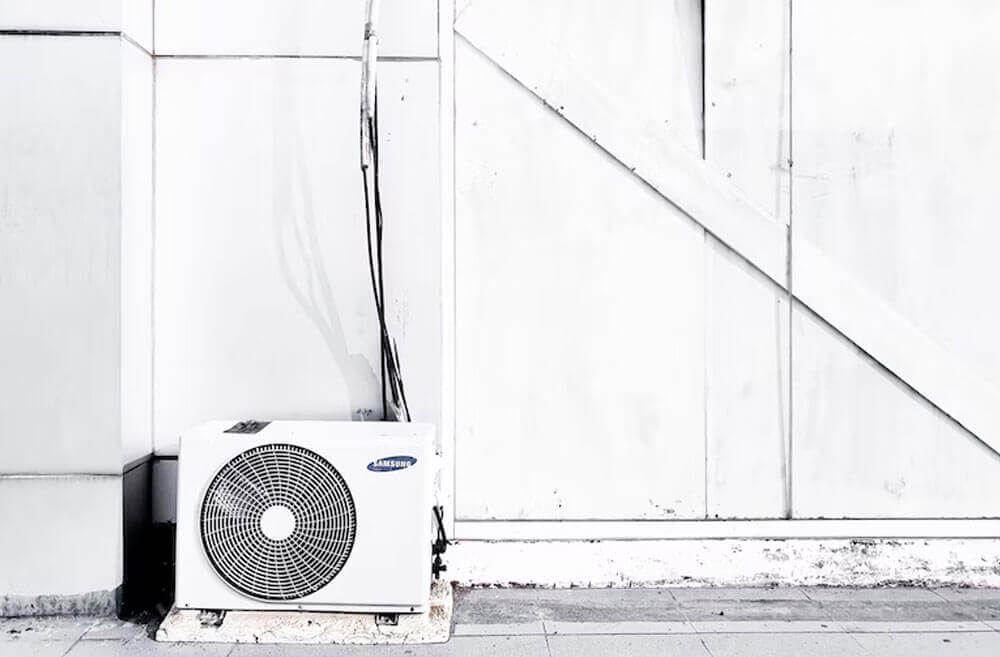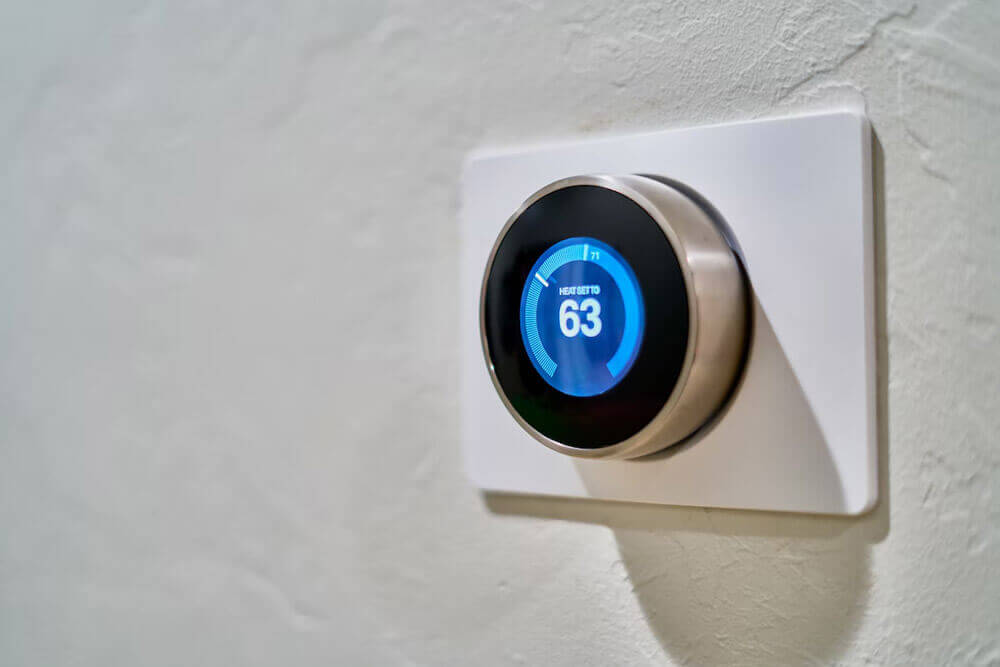By Go Green Heating & Air Staff
Updated July, 2025 | 8-Minute Read
Colorado winters can be harsh, and a home heating system that isn’t properly maintained can leave you facing uncomfortable, and sometimes costly problems. We’ve worked with many Denver homeowners to prepare their systems for the cold months ahead, but there are also actionable steps homeowners can take to make sure their heating systems are well-prepared for the cold months ahead.
This guide is built on that real-world experience. Below, we’ll walk through the key steps to get your heating system winter-ready, answer the most common questions, and share practical heating system maintenance tips.
Table of Contents:
- Schedule a Professional Heating System Inspection
- Replace or Clean Air Filters
- Clean and Inspect Ductwork
- Test Your Thermostat
- Inspect and Clean the Furnace
- Check and Seal Windows and Doors
- Clear the Area Around Vents and Radiators
- Common Heating System Maintenance Questions
- Stay Warm this Winter
1. Schedule a Professional Heating System Inspection
A key step in preparing your home heating system for winter is scheduling a professional inspection. A certified HVAC technician can thoroughly examine your system to identify any potential issues that may have arisen in the summer months.
Regular heating system inspections can catch problems early, preventing costly repairs and ensuring your system operates efficiently throughout the winter.
2. Replace or Clean Air Filters
Clean air filters are vital for the efficiency and longevity of your heating system. Dirty filters restrict airflow, causing your system to work harder and potentially overheat. Depending on the type of filter your system uses, you should:
- Replace disposable filters every 1-3 months.
- Clean reusable filters every 1-3 months according to the manufacturer’s instructions.
Maintaining clean filters is equally important during the summer. Regularly check, clean, or replace filters to ensure your system remains in good condition year-round.
3. Clean and Inspect Ductwork
Over time, dust, debris, and even mold can accumulate in your ductwork, reducing efficiency and air quality. Before winter, it’s essential to:
- Remove vents and vacuum inside the ducts.
- Wipe down vent covers and registers.
- Consider professional duct cleaning if there’s a significant buildup or mold presence.
Proper duct maintenance ensures that your heating system operates efficiently and delivers clean, warm air throughout your home when you need it most.
4. Test Your Thermostat
Your thermostat is the command center for your heating system. Ensure it’s working correctly by:
- Turning on your heating system and setting the thermostat to a few degrees higher than room temperature.
- Listening for the system to kick on and checking that warm air flows from the vents.
- Replacing the thermostat batteries if necessary.
If your thermostat is outdated or malfunctioning, consider upgrading to a programmable or smart thermostat. These devices offer better control over your heating system, allowing you to set schedules and reduce energy consumption.
5. Inspect and Clean the Furnace
The furnace is the heart of your heating system. Regular maintenance can extend its life and improve efficiency.
Key steps include:
- Turning off the power to the furnace before performing any maintenance.
- Cleaning around the furnace and removing any debris or obstructions.
- Inspecting the burner flames, they should be blue. Yellow flames may indicate incomplete combustion, requiring professional attention.
- Vacuuming around the blower and motor.
- Checking the furnace’s belt for wear and tension, and replacing it if necessary.
6. Check and Seal Windows and Doors
Heat loss through windows and doors can significantly impact your heating system’s efficiency.
To minimize heat loss:
- Inspect windows and doors for gaps or cracks.
- Apply weatherstripping or caulk to seal any leaks.
- Consider using heavy curtains or thermal window treatments to reduce heat loss.
Sealing windows and doors helps your heating system maintain a consistent temperature, reducing the strain on the system and lowering energy bills.
7. Clear the Area Around Vents and Radiators
Ensure that furniture, curtains, and other objects do not block vents and radiators. Restricted airflow can reduce your system’s efficiency and make it harder to heat your home. Clear the area around these components to allow for proper circulation of warm air.
Common Heating System Maintenance Questions
As winter approaches, we often receive numerous inquiries about the dos and don’ts of heating system maintenance and upkeep.
What are the different types of home heating systems?
There are several common types of home heating systems, each with distinct features, benefits, and maintenance requirements:
Central Heating Systems (Ducted Systems): These systems provide warmth to the entire home from a single, central heat source (often located in a basement or attic). Heat is distributed through a network of ducts or pipes. Common types of central heating systems include:
- Furnaces: Use natural gas, propane, oil, or electricity to heat air, which is then distributed through ductwork and vents. Furnaces are popular for their quick heating and compatibility with central air systems.
- Boilers: Heat water to provide either hot water or steam for heating through radiators or radiant floor systems. Boilers do not use ducts; instead, they circulate water via pumps and radiators.
- Heat Pumps: These versatile systems provide year-round climate control and are fully reversible, offering both heating and cooling. They transfer heat from the outside air or ground into your home.
Ductless Heating Systems: Also known as ductless heat pumps or minisplit systems, these do not require ductwork. Instead, each room or zone has its own indoor unit connected to an outdoor compressor. Options include:
- Minisplit Heat Pumps: Modern, remote-controlled units that deliver efficient heating and cooling to individual rooms.
- Window AC with Heat: Units that provide both air conditioning and heating, installed directly in a window.
- Portable Standing Air Conditioners with Heat: The most affordable and flexible option, these units can be moved as needed.
Direct Heating Systems: These systems heat specific areas or rooms directly, rather than the whole house. Examples include space heaters and gas fireplaces.
How do I maintain my heating system during the summer?
Maintaining your heating system during the summer is essential for its longevity and efficiency, even if you’re not using it.
Here are some tips:
- Protect the System: Ensure that the area around your heating system is clean and free of debris.
- Run the System Occasionally: Turn on your heating system for a short period during the summer to ensure it’s still functioning properly.
- Regular Heating System Inspections: Even though you’re not using your heating system, schedule regular inspections to catch any potential issues early.
- Clean and Replace Filters: Continue to check and replace or clean filters during the summer months to prevent dust buildup.
How do I prevent rust and corrosion from affecting my heating system?
Rust and corrosion can significantly impact your heating system’s efficiency and lifespan. To prevent these issues:
- Schedule regular maintenance to identify and address any signs of rust or corrosion early.
- Check for any leaks in the system and address them promptly.
- If you have an outdoor heating unit, consider covering it during the off-season to protect it from the elements.
- In humid environments, a dehumidifier can help reduce moisture levels, preventing rust and corrosion.
Should I cover my heating vents during summer?
Covering heating vents during the summer is generally not recommended. Doing so can restrict airflow, causing your HVAC system to work harder and reducing its overall efficiency. Additionally, covered vents may trap moisture, which may cause mold growth. Since HVAC systems are designed to operate with all vents open, covering some vents can disrupt the system’s balance and pressure, negatively affecting performance. For these reasons, it’s best to keep your heating vents open, unobstructed, and clean throughout the year.
Can my heating system develop mold during the summer?
Yes, your heating system can develop mold during the summer, especially in humid conditions.
To prevent mold growth:
- Occasionally, run your heating system to prevent stagnant air and moisture buildup.
- Fix any leaks in your HVAC system immediately to prevent moisture accumulation.
- Clean and inspect your ductwork and vents regularly to prevent mold spores from settling and growing.
- Use a dehumidifier to keep indoor humidity levels between 30 and 50%.
Mold can cause health issues and reduce your system’s efficiency, so regular maintenance and monitoring are essential.
What are the risks of not using my home heating system for an extended period?
The risks of not using your heating system for an extended period include the buildup of dust and debris, potential rust and corrosion, and the possibility of mechanical components seizing up. Additionally, mold can develop in the system if humidity levels are high. Regular maintenance and occasional use can mitigate these risks.
Here are a few maintenance tips to mitigate the risks of not using your heating system for an extended period:
- Schedule regular professional inspections to identify and address any potential issues early.
- Regularly clean or replace air filters to prevent dust buildup and maintain airflow.
- Turn on your heating system periodically to keep it in good working condition.
- Inspect for any signs of leaks and address them promptly to prevent rust and corrosion.
- Keep humidity levels in check to prevent mold growth within the system.
- Ensure the area around the heating unit is free of debris and obstructions.
Stay Warm this Winter
Preparing your heating system before winter hits helps prevent breakdowns and keeps energy use in check. Tasks like replacing filters, sealing air leaks, and testing your thermostat all make a difference, but having a licensed technician inspect your system is still the most reliable way to catch issues early.
Go Green Heating and Air Conditioning is built on honest service, straightforward advice, and quality work that matches Colorado’s winters. Our NATE-certified technicians are here to help you get the most out of your system. Schedule a professional inspection and maintenance service with one of our NATE-certified technicians today to make sure your Denver home heating system is ready for winter.
Go Green is a Gold Star Award Winner and maintains an A+ Rating with the Better Business Bureau of Colorado.
About the Author
Denver Heating & Air Conditioning has served homeowners throughout the Denver metro area with professional HVAC installation, repair, and maintenance services for over 20 years. Our team includes NATE-certified technicians who specialize in indoor comfort solutions, energy efficiency, and whole-home air quality.





